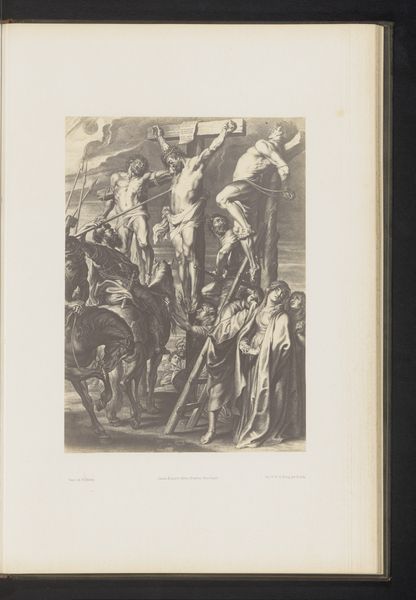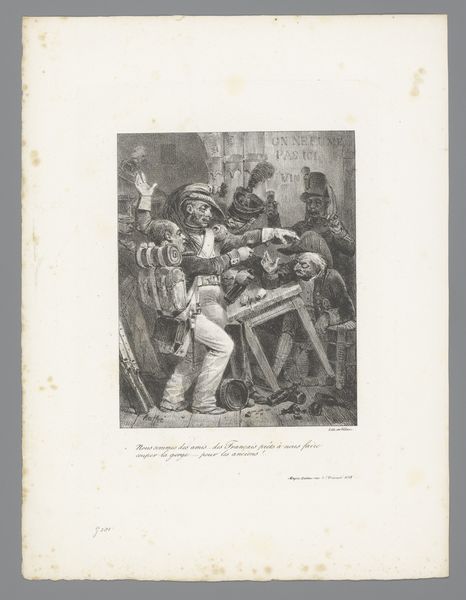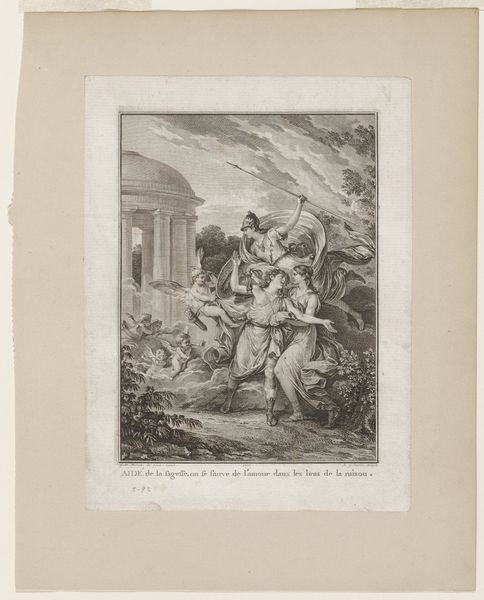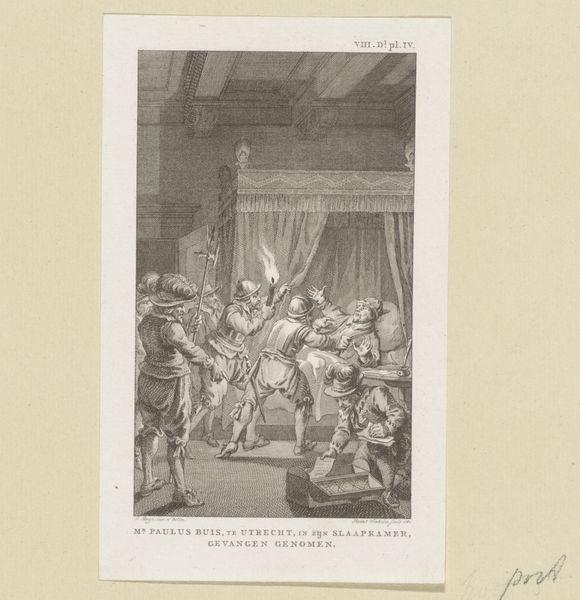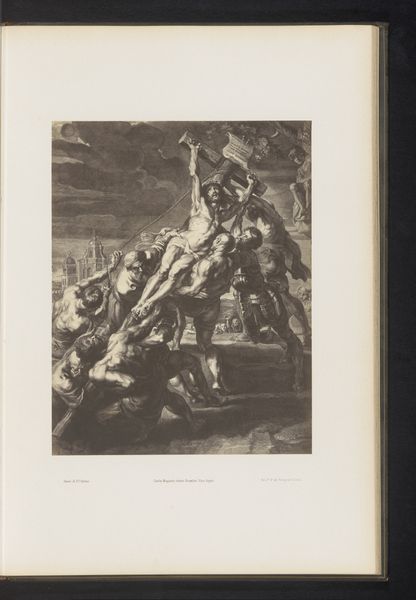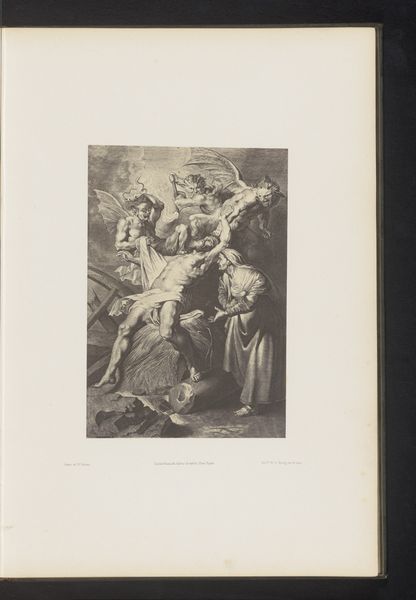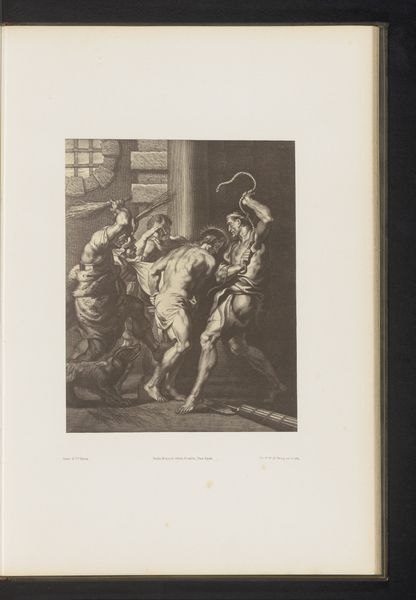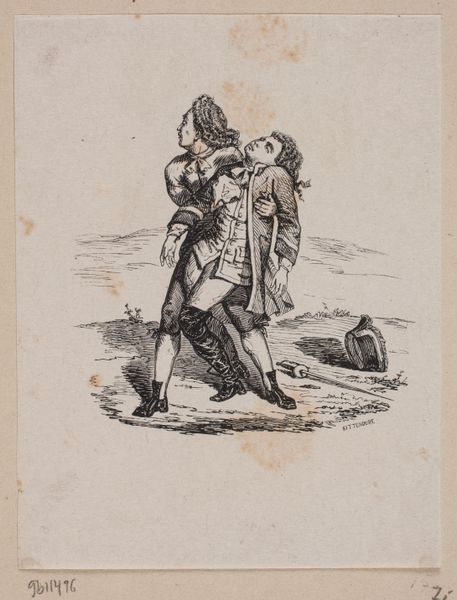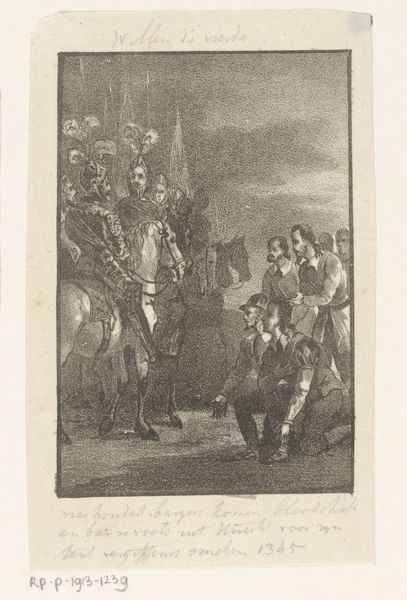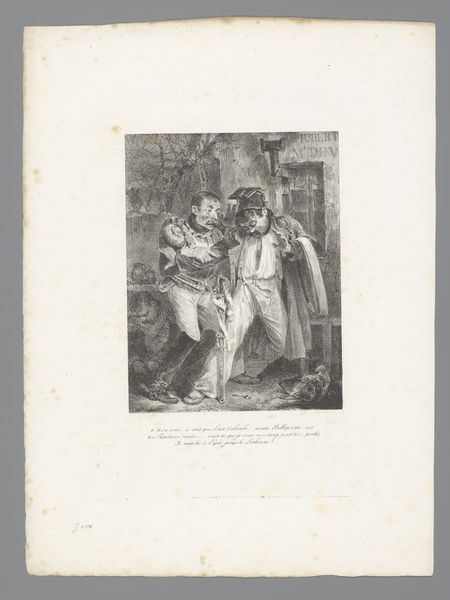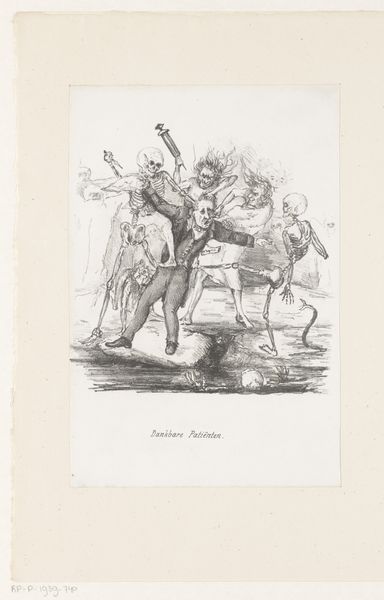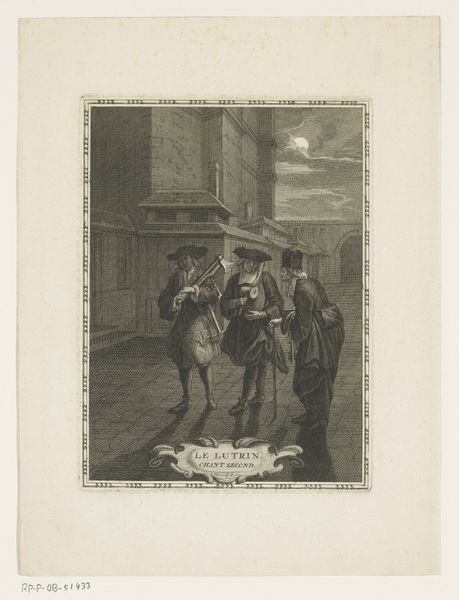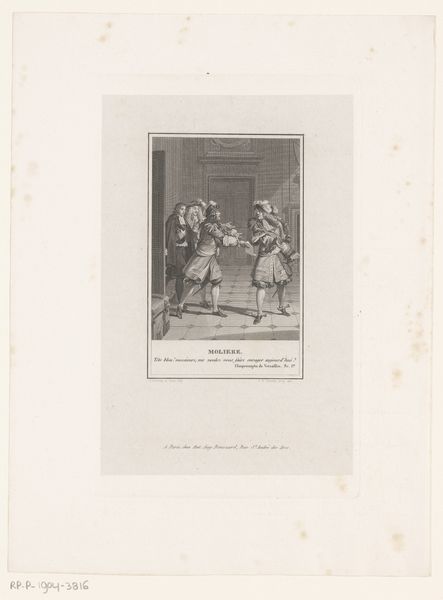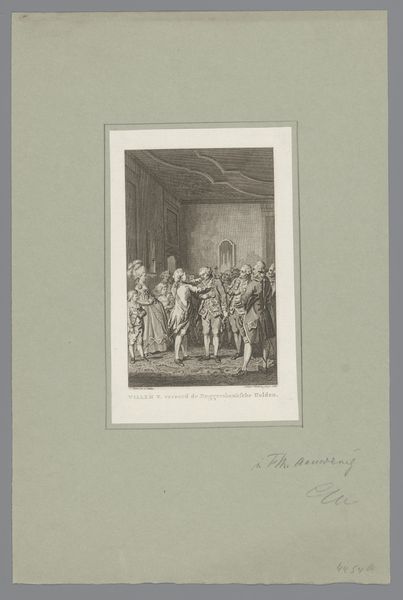
Mannen met hoeden met nummers er op, links kussende man en vrouw 1828
0:00
0:00
drawing, lithograph, print, paper, ink
#
drawing
#
narrative-art
#
lithograph
# print
#
caricature
#
figuration
#
paper
#
ink
#
romanticism
#
cityscape
#
genre-painting
Dimensions: height 373 mm, width 285 mm
Copyright: Rijks Museum: Open Domain
Curator: Here we have Auguste Raffet's "Mannen met hoeden met nummers er op, links kussende man en vrouw," a lithograph dating from 1828, currently held at the Rijksmuseum. Editor: It's quite chaotic, isn’t it? The energy is palpable, but the composition feels… disjointed. Curator: Well, let's consider the material and the means of production. This lithograph, rendered in ink on paper, was likely produced for a wide audience. Raffet aimed to capture a street scene, perhaps conveying social commentary on public behavior. The medium allows for mass distribution. Editor: That makes sense when we consider the perspective. But consider how Raffet employs hatching to create depth. The light seems to come from multiple sources, adding to the sense of unrest. The figures with their numbered hats create a strange, disorienting effect in the background, especially in contrast with the amorous couple. Curator: Absolutely, those numbered hats might denote military conscripts or some other form of state control, suggesting a society regulated by strict order imposed on private behaviour.. And this idea reinforces what may well have been common in a booming nineteenth-century city when an ordered, well-regulated community were the foundation of social stability and economic success. Editor: A useful social perspective, but back to form: notice how Raffet guides our eye through the scene. The repetition of shapes draws the viewers focus from the drunk, towards the happy couple and onwards to the numbered men in the crowd, giving the whole an exciting depth! Curator: By considering the relationship between the state, everyday people, and how new mechanical forms like the lithograph, we can further appreciate what Raffet set out to depict. Editor: An engaging tension is the cornerstone to what makes this piece a worthy entry to 19th Century works and styles. Its conflicting messages make it a great subject of interpretation!
Comments
No comments
Be the first to comment and join the conversation on the ultimate creative platform.
